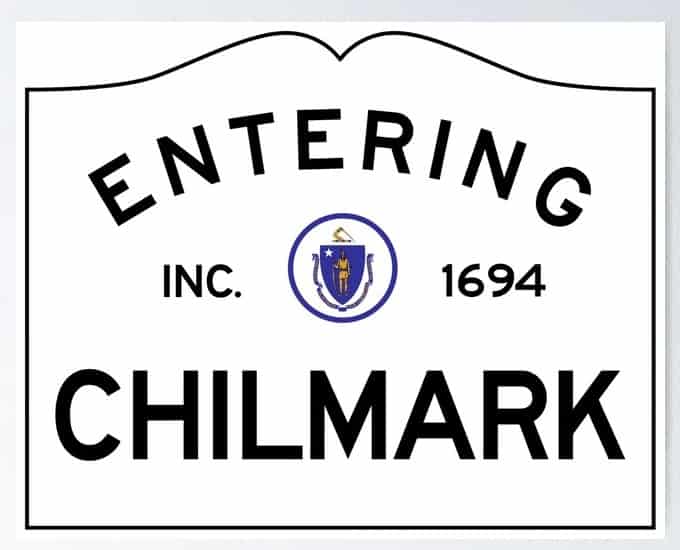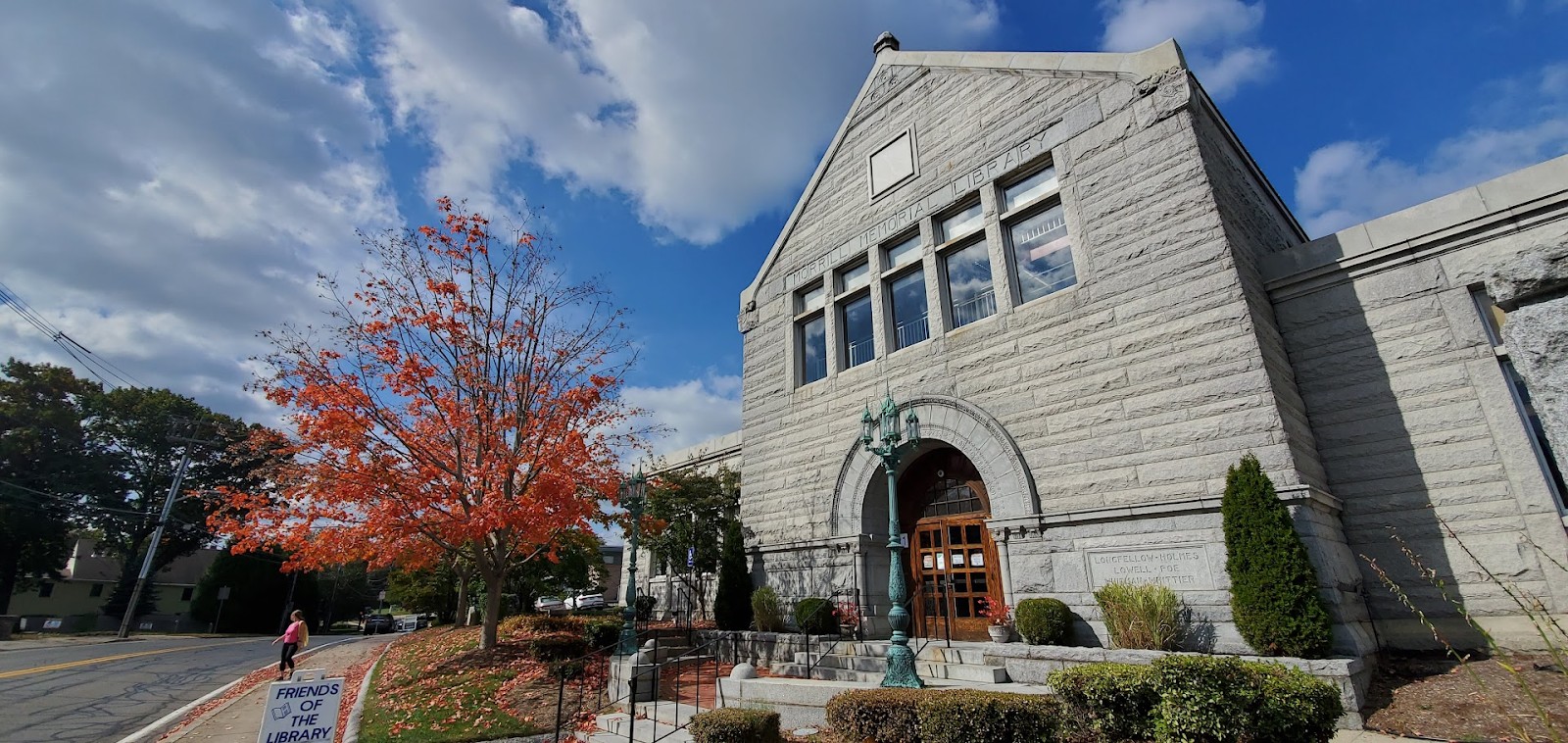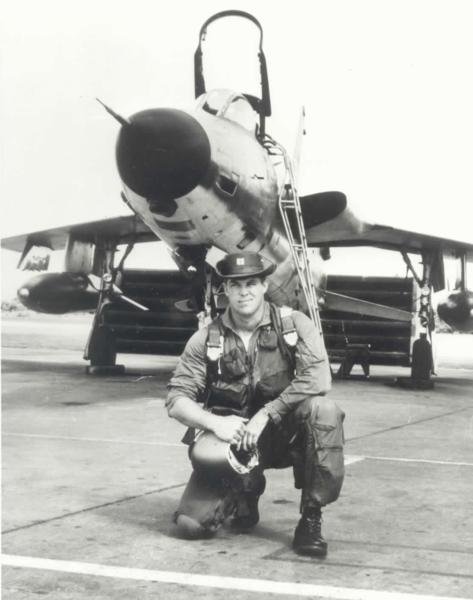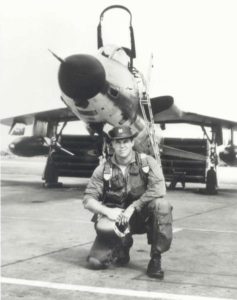Tag Archives:from the library

10
DecA Mouse Divided
 Walt Disney World started an 18-month celebration of its 50th anniversary on October 1, 2021. Walt Disney himself was born on December 5, 1901 and died on December 15, 1966. He would have been 120 years old this December. Mickey Mouse, Disney’s most famous cartoon creation, was created in 1928. Mickey is now 93 years old, but of course, he is ageless. Children grew up seeing Mickey on toys, in movies, in books and on clothes.
Walt Disney World started an 18-month celebration of its 50th anniversary on October 1, 2021. Walt Disney himself was born on December 5, 1901 and died on December 15, 1966. He would have been 120 years old this December. Mickey Mouse, Disney’s most famous cartoon creation, was created in 1928. Mickey is now 93 years old, but of course, he is ageless. Children grew up seeing Mickey on toys, in movies, in books and on clothes.
Just about everybody knows about Walt Disney and Mickey Mouse, but few know about a man named Ub Iwerks. Ub was Walt’s friend and business partner for ten years. Both Walt and Urb attempted to sketch a cartoon animal to promote Walt Disney Studios. Ultimately, after many attempts, it was Ub who came up with the final mouse sketch that would be Mickey. Ub was an accomplished animator by profession. Walt became more involved in Mickey’s actions and personification but took credit for the mouse’s creation. Ub did not agree with Walt’s version of Mickey’s portrayal, and a year after Mickey’s creation, Ub and Walt parted ways.
In Jeff Ryan’s book, A Mouse Divided: How Ub Iwerks Became Forgotten and Walt Disney Became Uncle Walt, he writes about his time researching the draft of a Walt Disney biography written by Richard Hubler that was never published, but survives in a box at Boston University’s Howard Gotlieb Archival Research Center. It is an in-depth account of the history of the creation of the Disney empire.
Anyone who reads A Mouse Divided should look at Ryan’s website, amousedivided.com. It has quotes from family members, friends and Walt himself during personal interviews. His wife, Lilly, said “He was so much more a director than an artist.” Ub Iwerks commented that “Walt was a cartoonist, not an artist. His biggest ambition in those days was to have a comic strip of his own.” Walt said of himself “I hide behind the mouse.” Ryan also includes the video cartoons that each chapter of his book describes. Some of the videos have been taken down because of copyright restrictions, but many are still visible and reflect a bit of the history of the early Disney creations.
Ub Iwerk’s son Dan, a former Disney executive, wrote the book Walt Disney’s Ultimate Inventor: The Genius of Ub Iwerks. It not only documents Ub’s little known contribution to the Disney legend and his technical genius, but contains never-before-published photographs and fascinating personal memories that span a 50 year remarkable career.
Regardless of the complicated early history of the Disney empire, Disney theme parks are a must see at least once in a lifetime. They capture the ultimate in magic and imagination and should be especially spectacular during this 50th anniversary celebration. If you do think you may have a trip to Walt Disney World in your future, you should take a look at two books before you start. Walt Disney World Hacks: 350+ Park Secrets for Making the Most of Your Walt Disney World Vacation by Susan Veness gives helpful tips for planning your trip and insightful ideas to make the visit the most memorable. For the children, Secrets of Walt Disney World: Weird and Wonderful Facts about the Most Magical Place on Earth by Dinah Williams discloses interesting and unique facts about the theme park before a visit.
Walt Disney said, “Disneyland will never be completed. It will continue to grow as long as there is imagination left in the world.” Walt is also quoted as once saying, “I only hope that we don’t lose sight of one thing – that it was all started by a mouse.” Ub Iwerks would certainly agree.
Norma Logan is the Literacy Volunteer Coordinator at the Morrill Memorial Library in Norwood, MA. Look for her article in the December 9, 2021 issue of the Transcript and Bulletin.

6
DecA Sign From Nearby
 Not that far from here, Martha’s Vineyard is one of the northeast’s most popular vacation spots. The name may evoke past summer vacations, time spent with friends and family, and windy ferry rides. Or it may bring to mind quaint shops, bike rides, and beaches. Or maybe you even know every location on the island where Jaws was filmed. Either way, most people in this area know something about Martha’s Vineyard.
Not that far from here, Martha’s Vineyard is one of the northeast’s most popular vacation spots. The name may evoke past summer vacations, time spent with friends and family, and windy ferry rides. Or it may bring to mind quaint shops, bike rides, and beaches. Or maybe you even know every location on the island where Jaws was filmed. Either way, most people in this area know something about Martha’s Vineyard.
If you grew up here, you may have learned about the Wampanoag people and how they were the first inhabitants of the island. Many school children are taught in history class about the island as a stop for sailing and fishing vessels, and the role of its ports in the whaling industry. But until I read Ann Clare LeZotte’s book, Show Me A Sign, I didn’t realize it was also the location of one of the earliest known Deaf communities in the United States. (*Note – “Deaf” refers to a group of people without hearing who share a language and culture. The lower case “deaf” refers to the condition of not hearing.)
Though the book is not based on a true story, it is the juvenile historical novel at its best, enlightening the reader about a little known historical footnote through compelling storytelling. Chilmark, a town on the Vineyard, had a robust Deaf community for about 200 years. Historians have been able to trace the beginnings of the community to Jonathan Lambert, a man from Kent, England who came to the island in the late 1600s. Lambert was congenitally deaf, and when his wife bore their children on the island, two of them were also born deaf. This family provided the genes that would spread over generations, creating a significant Deaf population.
Chilmark was a somewhat secluded town. All the other towns on the island had their own port, but Chilmark did not. It was also hard to get to from the rest of the island, as it was surrounded by swamps and rocky terrain. Before better roads and transportation, it could take more than a day to get from Chilmark to other towns. This seclusion led to a limited gene pool within the town, and by the mid 1800s, Chilmark’s Deaf population was 1 in 25 residents (in the rest of the US, it was 1 in 5,700 at the time.) Because of this, almost every family had a member who was deaf. In order to communicate with each other, every member of the community knew sign language. The language would later become known as Martha’s Vineyard Sign Language (MVSL) and, as its name suggests, was unique to the island. (To learn even more about this fascinating history, check out Nora Ellen Groce’s Everyone Here Spoke Sign Language: Hereditary Deafness on Martha’s Vineyard.)
All of this was the setting for LeZotte’s Show Me A Sign. The main character, Mary Lambert, is a distant descendant of Jonathan Lambert, and is deaf. In her community, this is so common, it is barely spoken of or thought about, and Mary has no idea that Deaf people are treated any differently beyond their island. She is a normal tomboy, always looking to escape her chores, who loves nothing more than causing trouble with her best friend, Nancy. But Mary’s brother was recently killed in an accident, and her family is grieving. Her mother is the most devastated, and Mary doesn’t know how to be around her. She yearns to escape the sadness of her house, and spends much of her time walking and creating stories in her head. When an outsider visits the island to learn about Chilmark’s unique community, he brings with him the outside world’s notions that Deaf people are somehow damaged. While he seeks to discover the cause of deafness in the community, Mary finds an outlet for her frustration and sadness in challenging him. Unfortunately, Mary does not understand the lengths to which he will go to make a name for himself, and his cruelty will change Mary’s world forever.
In an interview with diversebooks.org, LeZotte talks about how she didn’t want to write a book where a Deaf child living in the hearing world has to overcome obstacles to become accepted. She learned about Chilmark in the 1990s when she lived on the Cape. When she took a trip to the island, she learned about its history and MVSL. LeZotte, herself a Deaf writer, knows that Deaf children do not have enough representation in any media, and she wanted to write a story where the main character’s lives and language are completely normal for them. Mary Lambert does not have to prove to her community that she belongs; an ableist outsider, ignorant and cruel, is the problem.
Ann Clare LeZotte recently released a second book about Mary, Set Me Free. This book sees Mary trying to help a young girl who was not fortunate enough to have been born in a place where her deafness was understood. Both of these books offer young people an invaluable perspective, and hopefully lead them to question what is normal, how they might see people differently, and whether or not “different” is something that necessarily needs to be changed or fixed. These are just some of the issues that great fiction can raise, and allow children to broaden their world view. LeZotte’s writing provides ample opportunities for that expansion.
Nicole Guerra-Coon is an Assistant Children’s Librarian at the Morrill Memorial Library in Norwood, MA. Look for her article in the December 2, 2021 issue of the Transcript and Bulletin.

29
NovGiving Thanks
 Each day as we have fewer and fewer hours of sunlight and the leaves share their vibrant colors before falling to the ground, there are a great number of emotions that course through me. We are presented every fall with a stark reminder of the inevitability of change. This is not the change of spring with new flowers and fresh growth. This is the change of decay, aging, and the slide into cold, deep stillness. There is a very good reason why cultures all around the world have developed elaborate traditions to celebrate light and birth in the middle of winter, but we aren’t there yet (even though stores are doing their best to rush us). Let us take a moment to reflect on the present moment.
Each day as we have fewer and fewer hours of sunlight and the leaves share their vibrant colors before falling to the ground, there are a great number of emotions that course through me. We are presented every fall with a stark reminder of the inevitability of change. This is not the change of spring with new flowers and fresh growth. This is the change of decay, aging, and the slide into cold, deep stillness. There is a very good reason why cultures all around the world have developed elaborate traditions to celebrate light and birth in the middle of winter, but we aren’t there yet (even though stores are doing their best to rush us). Let us take a moment to reflect on the present moment.
There is a reason we give thanks at this time of year. Since humans started practicing agriculture so many generations ago, this is the season of harvesting and making sure our larders are full for the times that lie between now and when things will grow again. In this modern era when we can get food from a local store virtually 24/7, it is possible to forget this seasonal passage, but I remember some great tasting tomatoes this summer and I know I won’t revisit that flavor and texture until next summer. A few weeks ago I had the pleasure of picking some late-season raspberries and I knew at that moment that their sun-warmed sugars that melted on my tongue were fleeting. Yes, we can freeze, pickle, and ship across incredible distances, but the flavor is never quite the same.
Last weekend I was spending some time with friends who grew up and still have family in Canada. Their son is in college in Montreal and we were talking about the challenges of not having a Thanksgiving break in his schedule. Canadians have their own Thanksgiving celebration on the second Monday of October. This is the same day as the contentious U.S. federal holiday of Columbus day, which many communities are renaming Indiginous Peoples Day. On the fourth Thursday in November I have other friends who have an annual tradition of going to Plymouth AKA Plimuth/Patuxet not to celebrate but to participate in the National Day of Mourning. How can we respect the efforts to celebrate Italian and American culture while simultaneously recognizing the human rights abuses that were suffered upon generations after generations of people on these same shores?
In the last Morrill Moment I recorded with Norwood Community Media I featured a couple of books that I’d like to mention again. If you haven’t seen any of the Morrill Moments yet, you can catch up on our YouTube channel: https://www.youtube.com/MorrillMemorialLibrary. These are short videos we are creating every month to let you know the latest library news and I always feature a couple items from our collection. David Silverman wrote This Land is Their Land: The Wampanoag Indians, Plymouth Colony, and the Troubled History of Thanksgiving. This non-fiction book encourages us to rethink our country’s mythic beginnings and how we tell the story of Thanksgiving.
I hope you will take some time to deeply reflect about our shared stories, what we choose to celebrate, what adventures we want to remember with joy and what we have to remember to avoid repeating. There are plenty of opportunities for pride and grief. Both are real and we do ourselves a grave disservice when we neglect or over-emphasize either. And every day we also just need to eat.
Hopefully you’ll be able to share some food this season with people you care about. Whether it is the family you were born into, the family you’ve chosen, or even just your own company, food nourishes while connecting us with our values and cultural traditions. Since every day I’m surrounded by so many more books than anyone could ever read in many lifetimes, I’ve seriously limited how many books I personally own. However, I continue to collect cookbooks because a good cookbook is something I will turn to time and again for inspiration and sustenance. I like to borrow cookbooks from the library before I decide if they need a spot in my personal collection. I encourage you to do the same. Perhaps you’d like to start with Anna Thomas’ book Vegan, Vegetarian, Omnivore: Dinner for everyone at the table. With beautiful photographs and a very welcoming and inclusive style, this book can help make everyone feel welcome at meal time.
As you may have guessed, I enjoy eating an exclusively plant-based diet. I appreciate that everyone has to make their own choices and I have no interest in standing on a soapbox to tell you what you should or should not do. I’m happy to talk with you about my choices if you’re interested, but you will have to ask first. That said, the most recent book I added to my personal collection is from the creative team now going by the name Bad Manners. They used to be known as Thug Kitchen but for reasons I won’t go into they’ve changed their name (you can learn more about their reasons on their website: https://www.badmanners.com/change). Their latest book is Brave New Meal and if profanity doesn’t bother you and you like fresh flavors and beautiful photos of food, I strongly recommend it. They have some previous books that I also enjoy, and if you have a large number of people coming together you may be inspired by Bad Manners: Party Grub, but in our catalog it will be easier to get a copy if you search for Thug Kitchen: Party Grub.
However you spend your time this fall, I implore you – don’t race to the next season, even if the Christmas displays at your local store have already been up for weeks. Take a walk in the woods, spend some time with friends, eat some good food, and appreciate the good things in life. Make sure you tell people what you are thankful for. I’m so thankful to be working here in Norwood with a great team of librarians and library staff, caring and dedicated peers working across town departments, the greatest Board of Library Trustees I could ever ask for, tireless Friends, community members who share their personal time and passions to make Norwood and the world a better place for us all, and all the people who came before me here to make all of this possible. I’m grateful to my personal friends near and far, to my family, and especially to my two incredible children and amazing best friend, life-partner, and wife.
Thank you for reading. I wish you and yours the best Thanksgiving possible.
Clayton Cheever is the Director of the Morrill Memorial Library in Norwood, MA. Look for his article in the November 25, 2021 issue of the Transcript and Bulletin.

29
NovShine On
 As I write this piece in the shadow of Veterans Day 2021, I think about my family members who have served in America’s Armed Forces over the decades. Their service has stretched back through American history from the Civil War through both World Wars, Korea, and Vietnam, and across multiple branches of the military including the Army, Navy, and Air Force. Growing up, I was lucky to know both of my grandfathers, one having piloted a ship in the Pacific Theater of World War II and the other having served in the Army Infantry in North Korea.
As I write this piece in the shadow of Veterans Day 2021, I think about my family members who have served in America’s Armed Forces over the decades. Their service has stretched back through American history from the Civil War through both World Wars, Korea, and Vietnam, and across multiple branches of the military including the Army, Navy, and Air Force. Growing up, I was lucky to know both of my grandfathers, one having piloted a ship in the Pacific Theater of World War II and the other having served in the Army Infantry in North Korea.
Though the conflict is more recent, I never got to meet my relative who served in the Vietnam War, my great-uncle Anthony C. Shine. I remember first learning about Anthony in the mid-1990s, and my main connection with him has been that my younger brother is named after him. Recent digging online revealed details about his life I never knew, and I’m amazed to learn what an incredible, strong, and accomplished person he was. He has truly left a legacy to be proud of.
Lieutenant Colonel Anthony C. Shine was a fighter pilot in the Vietnam War. Before that however, he was a loving husband, father, and son from a patriotic family. He was also a polio survivor. As a young child, he loved competitive sporting pursuits and above all football, and by all accounts was the sort of boy who would have been right at home in a Norman Rockwell painting. At the age of 11 he contracted polio, an illness that permanently paralyzed or killed many children who caught it, and was bed-ridden for many months. When he finally recovered Anthony was left weak with atrophied muscles, and his family was told he would never be able to hold a pencil or walk again.
From an early age therefore, Anthony developed a strength of character and determination that would be hallmarks of the rest of his life. He underwent years of grueling physical therapy and training to regain the ability to write, to walk without a limp, and to eventually become a starter on his high school’s football team and on Colgate University’s football team. He underwent muscle transplant operations to restore the use of his left thumb, but his left hand was noticeably smaller than his right. Rather than being crippled by polio, Anthony grew into an over six foot-tall force to be reckoned with.
The physical deformity in his left hand could have disqualified him from becoming an Air Force pilot, let alone a fighter pilot which has famously strict physical ability requirements. Anthony beat the odds again however, working diligently to build strength and regain full dexterity in his left hand. After joining the Air Force in 1961, Anthony was an instructor pilot for years before deploying to Vietnam. He touched many lives and encouraged his students to work harder than others thought they could, and to always persevere to achieve their goals.
During his first tour of duty in Vietnam in 1970, Anthony accompanied his brother’s remains home for burial; all four of the Shine siblings served in Vietnam, but only two would survive the war. Anthony then volunteered for a second tour. On December 2, 1972 Anthony, an Air Force Captain at the time, was piloting his A-7D fighter craft on a reconnaissance and escort mission near the Barthelemy Pass in North Vietnam. The passes through the mountains that border the Lao/Vietnamese borders were heavily concentrated with enemy missile and Anti-Aircraft Artillery sites, and therefore were frequent bombing targets. Of the many Americans lost near these passes, few returned. Search was difficult not only because the enemy was present, but also because the terrain is incredibly rugged. Anthony radioed his wingman that he was dipping below cloud cover to get a closer look at their target, and after 10 minutes of radio silence his wingman tried to contact him. Anthony never responded, and after a 3-day aerial search Anthony was declared Missing in Action. He was 33 years old, and his A-7D Corsair plane was the first of that model to be lost in the war.
Anthony’s family did not learn this level of detail for decades however, and Anthony was finally declared dead in 1980. His family never gave up the search, and were frustrated by the wall of silence they encountered from government officials. At the time he was declared MIA the US was not officially supposed to be occupying the ground or air space of Laos, having helped broker an agreement to establish a neutral and independent Laos in 1962, though both the US and North Vietnam continued to intervene secretly to back different warring factions. Since Anthony’s plane went down in northern Laos the military could not admit their presence in the area let alone mount an effective search for Shine, especially in the aftermath of the controversial Vietnam War.
After a decade and half with no answers, rumors began to filter back to the US in 1987 about plane wreckage, witnesses, and even a found helmet. While officials dismissed the claims Anthony’s daughter Colleen was galvanized, and in 1993 she travelled to Vietnam to conduct her own investigation. After renting a Russian vehicle, hiring a local guide, and learning that the area had been looted and likely wouldn’t contain any further evidence, Colleen did find her father’s crash site and even recovered his helmet with his name handwritten inside. With this new information investigators were able to conduct a fuller search of the site, eventually finding more of the missing plane, dog tags, and even Anthony’s remains in a nearby grave. His remains were returned to the US in 1995 and in 1996 were officially identified as those of Anthony Shine, who by that time had been posthumously promoted to the rank of Lt. Col.
In October 1996 my family and I travelled to Arlington National Cemetery where Anthony was interred with full honors, including four F-15 fighter aircraft executing the missing man formation directly overhead. As a child I remember the fly-over being incredibly loud. We visited the Vietnam War Memorial wall, where we found Anthony’s name marked by the MIA cross symbol. That symbol has now been filled in to the full KIA diamond shape of all the other found fallen.
If you’ve never visited the Vietnam War Memorial it’s an incredibly powerful experience seeing the names of every fallen American soldier starkly chiseled in dark stone. In my recent research I found that the memorial now hosts a website dedicated to finding photographs to accompany every soldier’s name, and it’s here that I came face to face with the larger than life Anthony C. Shine. I was also incredibly moved to see all the comments and well-wishes from so many other servicemen and their families, whose lives Anthony impacted. He’s truly a person I wish I could have known, and was taken from us far too soon. His family remained active in POW/MIA advocacy efforts and established an annual US Air Force award in Anthony’s name that is given to an outstanding pilot who is also active in their local community.
To compile this piece I relied on The Wall of Faces section of the Vietnam War Memorial website, and to meet Anthony yourself you can visit his page directly. I gathered a lot of information from a piece written by Anthony’s family, “Overcoming Incredible Odds,” excerpted from the book They Were Our Family, a sample of which can be found on the Vietnam Veterans Memorial Fund website. In addition the Military Hall of Fame website had further details about Anthony’s service, and the Fixed-Wing Air Losses in Vietnam website had further details about his crash. For more information about the Vietnam War I found the Smithsonian’s The Vietnam War: The Definitive Illustrated History and The Vietnam War by Geoffrey Ward and Ken Burns to be helpful sources.
Liz Reed is the Adult and Information Services Department Head at the Morrill Memorial Library in Norwood, MA. Look for her article in the Nov 18, 2021issue of the Transcript and Bulletin.

12
NovMore Mise, Please!
 Cooking has always been a mad dash for me. I often get so excited about the finished product that I will have made that I don’t take the time to properly prep my ingredients. My standard cooking method is to just plop all of the ingredients on the table, and then measure and chop as I go down the list of recipe steps. This method inevitably leads to a lot of rushing and dashing around the kitchen to grab measuring spoons, cutting boards, and to toss my various used cooking utensils into my rapidly overflowing sink. Comparing my method to the way that I see people cook on Food Network always left me wondering what exactly I was doing wrong. How come they always seemed so relaxed when cooking, while I was always left exhausted? The same thought would occur whenever I heard someone talk about how they found cooking “relaxing,” or how they loved to cook to “unwind.” I’d always scoff at that sentiment, because what was so relaxing about rushing to make sure your onions were chopped before throwing them into your pan that was now spitting oil and about to catch fire?
Cooking has always been a mad dash for me. I often get so excited about the finished product that I will have made that I don’t take the time to properly prep my ingredients. My standard cooking method is to just plop all of the ingredients on the table, and then measure and chop as I go down the list of recipe steps. This method inevitably leads to a lot of rushing and dashing around the kitchen to grab measuring spoons, cutting boards, and to toss my various used cooking utensils into my rapidly overflowing sink. Comparing my method to the way that I see people cook on Food Network always left me wondering what exactly I was doing wrong. How come they always seemed so relaxed when cooking, while I was always left exhausted? The same thought would occur whenever I heard someone talk about how they found cooking “relaxing,” or how they loved to cook to “unwind.” I’d always scoff at that sentiment, because what was so relaxing about rushing to make sure your onions were chopped before throwing them into your pan that was now spitting oil and about to catch fire?
Part of me knew that these people, especially chefs on TV, always had their ingredients prepped, but my cooking tends to be so on the fly that I never even considered taking the time to physically prep all of my ingredients beforehand. I would try to get all of the ingredients I needed out onto my work surface, but I would only bother to measure and chop them as I was following along with the recipe steps. Then, when I finally picked up a copy of Anthony Bourdain’s classic, Kitchen Confidential: Adventures in the Culinary Underbelly, I learned about the magic of the mise en place. Bourdain writes that mise en place is “the religion of all good line cooks” (Bourdain). Mise en place, which translates to “putting in place” from French, is the act of both prepping and organizing your ingredients prior to the cooking process. For example, if you were making a dish that required chopped onions and garlic, you would take the time to chop up the onions and the garlic and to set them aside before you started the actual cooking. You would also measure out your ingredients and keep them prepared in little bowls or containers in order to streamline the cooking process.
Once I started incorporating mise en place into my cooking routine, I found that cooking became much less stressful. The process became a lot smoother, and I wasn’t as stressed out when cooking. I also discovered that I find chopping produce oddly relaxing. After I amassed a large amount of apples after an apple-picking trip to Natick, I was trying to find recipes that would use up a lot of apples, and I found one for an apple cake, which involved lots of chopping and peeling. There was something so relaxing about peeling the apples, and then using a good knife to chop them up, all while not having to rush. I used to dread having to cook a recipe that called for chopped up onions or other produce, but now I relish the time I get to spend chopping them up. I now see why some people use cooking as a way to unwind or relax. If you are able to take the time to prepare your ingredients with care, and you don’t have a time restraint on your cooking, then it can become very soothing and fulfilling to chop up a bunch of apples and then pop them into a pie, for example.
If you would like to start incorporating a mise en place into your cooking process, these are the steps that you should follow. First, have your recipe on hand, and make sure that you have all of the measuring tools and cooking equipment that you will need. Second, wash and chop, peel, and measure out all of your ingredients. Once you are done preparing all of your ingredients, place them in appropriately-sized bowls and containers so that they will be at the ready for when you start cooking. Finally, make sure that your prepped ingredients are conveniently placed around your work area so you can just reach over and grab them when needed. To quote Anthony Bourdain once more, “The universe is in order when your station is set up the way you like it” (Bourdain).
If all this talk of mise en place and cooking makes you want to start whipping out the measuring cups and cutting boards, here are some recommendations for my favorite cookbooks. One of my all-time favorite home cooks is Ree Drummond, and I always make sure to check out every new Pioneer Woman cookbook that she releases. I love Drummond’s cookbooks because she always includes lots of step-by-step photos that go along with her recipes, which I always find to be massively helpful when attempting a new recipe. Chrissy Teigen’s Cravings cookbooks are another of my favorites. I really like the intros that she writes for each recipe explaining its background or inspiration in her life, plus all of the food that she creates always looks so yummy! Asian recipes are some of my favorite foods to eat and cook, and my go-to cook for great Korean recipes is Maangchi, who originally started sharing her recipes on YouTube and her food blog, but now has a great cookbook out, Maangchi’s Big Book of Korean Cooking: from Everyday Meals to Celebration Cuisine. Another great cookbook featuring Asian cooking is Lucky Rice: Stories and Recipes from Night Markets, Feasts, and Family Tables, by Danielle Chang which provides a variety of recipes from countries all over Asia. If you’re looking for a more plant-focused cookbook, The Peach Truck Cookbook features 100 recipes all incorporating my favorite fruit, peaches! Another great cookbook that is vegan-friendly is Plant-Powered Protein, which features over 100 recipes that all use vegan ingredients such as plant-based meat alternatives (their recipe for vegan massaman curry is my favorite!) Finally, if all this talk of cooking intrigues you, but you may not be the most experienced cook, You Suck at Cooking: the Absurdly Practical Guide to Sucking Slightly Less at Making Food is a hilarious, but very helpful cooking guide and cookbook for the new chef.
Dina Delic is the Assistant Children’s Librarian at the Morrill Memorial Library in Norwood, MA. Look for her article in the November 11, 2021 issue of the Transcript and Bulletin.
